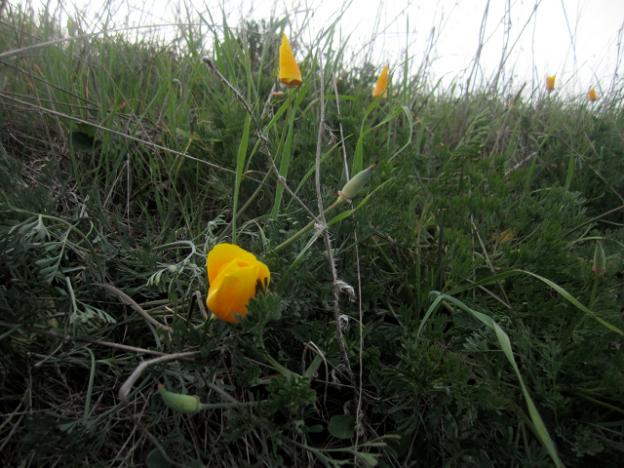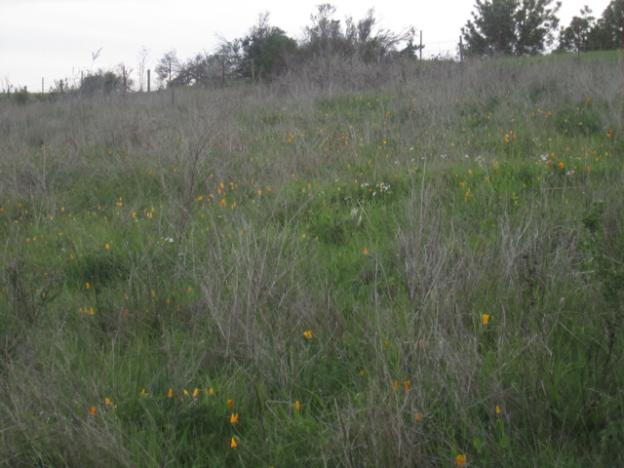Is the spring of 2014 yielding more California poppies than usual? With California Poppy Day (April 6) just around the corner, we asked Stephen McCabe of the UCSC Arboretum.
by Hilltromper staff
March 31, 2014—It's been an astounding year for California poppies, or so it seems to us. They wave their pretty little flags from sidewalks, vacant lots and roadsides. They're all over the banks of the San Lorenzo River, a place we've never noticed them before. They've colonized the new roadcut on Graham Hill Road and lined the fresh stretches of asphalt with what looks like extra zest for life. And there's a huge number of them uphill from the Spring Trail at Pogonip, another place that, in our memory at least, hasn't been especially well endowed with poppies before this year.
So what gives? Are we in the midst of some kind of Great Poppy Glut? Will Spring 2014 go down as a California poppy year par excellence?
Meh. Probably not, according to the experts. Stephen McCabe, research director at the UCSC Arboretum, explains that a few different things are probably happening at once. First, although California poppy is considered an annual, "there are a number of them that will grow for more than one year," he says. "If you go along Mount Hermon Road between Felton and Scotts Valley you'll see some, and one reason I think they're there is they can survive more than one year."
Thing number two: This year's poor rainfall may be favoring natives like poppies over the nonnative grasses that typically obscure them. "If you get a lot of rain at the wrong time, you won't see the poppies because they're being outgrown by the grasses," says McCabe. "Some of the nonnative grasses aren't doing very well right now," he adds.
So not necessarily more poppies, just more visible poppies, seems to be the answer. We'll store that information away for California Poppy Day, coming up April 6. There doesn't seem to be much hullabaloo in store on that day of celebration—just this Gold Country winery offering free poppy seeds to anyone who comes in the door—but we just may have our own private poppy festival, in which we observe the many poppies in the field and ponder related fun facts.
Poppy Miscellany
Eschscholzia californica ran for state flower against the mariposa lily, which you can find at Pinnacles National Park in springtime, and the Matilija poppy, also called "fried egg plant" for its big white flowers with yellow centers. The California poppy won in a landslide, leaving the other flowers to slink home in shame. This was in 1890.
California poppies are used medicinally (by whom is anyone's guess) for their sedative, analgesic and antispasmodic properties, but don't think you're going to grow some California poppies and build yourself an opium den for side income. The opium poppy, a distant relative, has different alkaloids altogether.
Poppies close their petals at night and on cloudy days.
Antelope Valley, northeast of Los Angeles, holds an annual Poppy Festival. This year it's April 26 and 27.
Category:


















